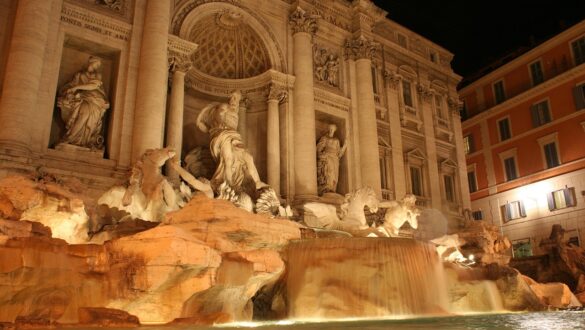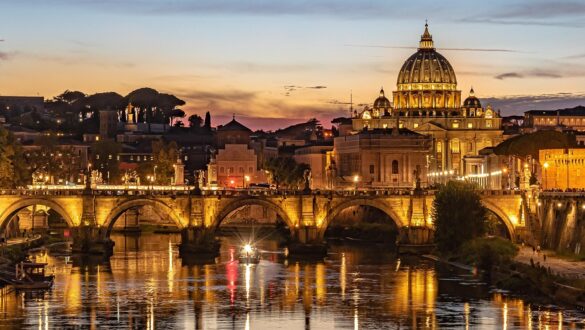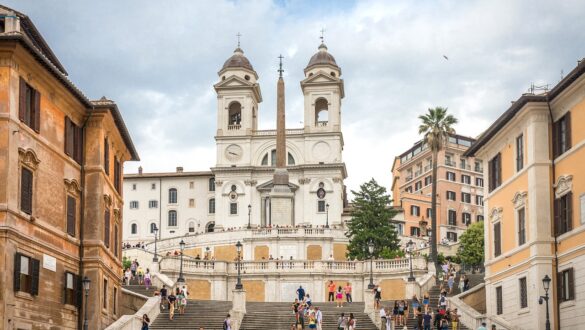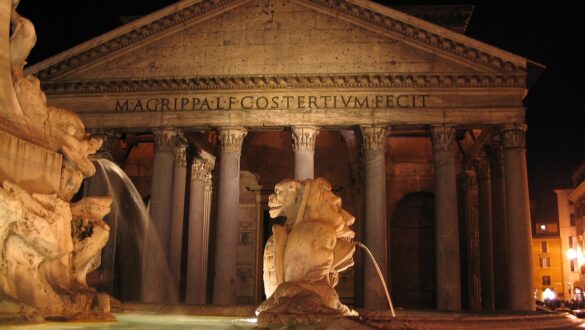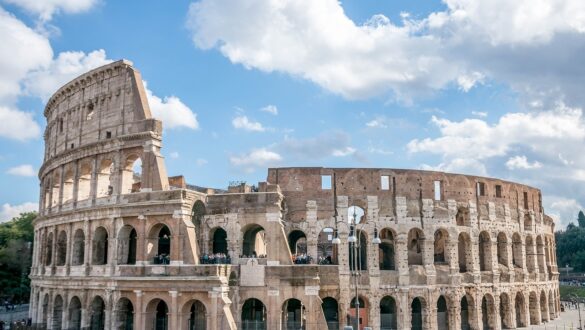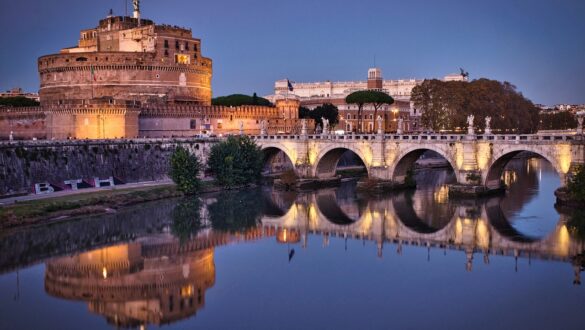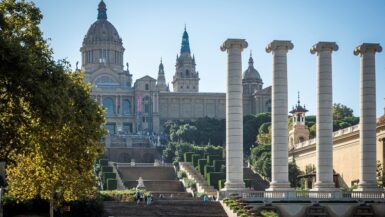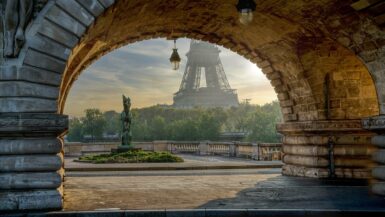Table of Contents
When is the best time to visit Rome
The best time to visit Rome, considering both weather and tourism, may vary based on individual preferences. Here is information on both aspects:
Weather
- Spring (March – May): Spring is generally pleasant with temperatures around 15-25 °C. Low precipitation and blooming nature make it a delightful time for walks and sightseeing.
- Summer (June – August): Summer is hot, with temperatures reaching 30 °C and above. This period is popular among tourists but can be challenging due to high temperatures. Short, intense rain showers are also common.
- Autumn (September – November): Autumn offers pleasant temperatures around 15-25 °C and a lower tourist season than summer. Short rain showers may occur.
- Winter (December – February): Winter is generally mild, with temperatures around 5-15 °C. Tourist traffic is lower, although it can be colder, and occasional snowfall may occur.
Precipitation and Snow
- Precipitation: Expect precipitation mainly in spring and autumn. Winter can be damp, but rainfall is not as common as in other seasons.
- Snow: Snow is rare in Rome and does not occur every year. When it does, it’s usually a brief and light covering. Snow can add a unique atmosphere, making landmarks appear even more magical.
Tourism
- Spring and Autumn: March to May and September to November are ideal for visiting as they are less crowded than summer months. The weather is pleasant, allowing carefree exploration of the city.
- Summer: Summer attracts the most tourists, especially in July and August. Landmarks and streets can be very crowded. It’s recommended to plan visits early in the morning or evening and avoid the hottest parts of the day.
- Winter: Winter offers a quieter atmosphere and lower prices, but landmarks may have shorter opening hours. The Christmas season can be particularly enchanting, with Christmas markets and decorations throughout the city.
Accommodation in Rome
Choosing accommodation in Rome offers a wide range of options, from luxurious hotels to budget-friendly hostels. Here are some tips to help you choose accommodation in Rome:
Location is Key:
Choose a location close to major landmarks and attractions to minimize travel time. Areas like the Pantheon, Trastevere, and the vicinity of the Vatican are popular for their central locations.
Align with Your Preferences:
Consider whether you prefer a quiet neighborhood or lively nightlife. Each district in Rome has its unique charm and atmosphere.
Reviews and Ratings:
Read reviews and ratings from previous guests on booking websites or specialized platforms. This will give you a better idea of the quality and services offered by the accommodation.
Book in Advance:
Rome is a popular tourist destination, so it’s recommended to book accommodation in advance, especially during the peak tourist season, to have more options available.
Airbnb and Apartments:
If you’re looking for more space or an authentic experience, consider renting an apartment through services like Airbnb. This can be advantageous for groups or those looking to experience local atmosphere.
Look for Deals and Discounts:
Regularly check accommodation deal websites and look for discounts. Some hotels and residences may offer special rates for direct bookings or extended stays.
Parking and Accessibility:
If you plan to arrive by car, check if your accommodation offers parking. Also, ensure that it is well-connected to public transportation for convenient travel around the city.
Dining and Additional Services:
If you prefer accommodation with a kitchenette or complimentary breakfast, choose accordingly. Some accommodations may also offer additional services such as airport transfers or organized tours.
When selecting accommodation, it’s crucial to consider your individual needs and preferences to make your stay in Rome as enjoyable as possible.
What to See in Rome
Rome, the capital of Italy, is full of breathtaking historical landmarks. Here are some of the most famous and intriguing places to visit, along with a few sentences describing each:
Colosseum:
The Colosseum, an icon of Rome, is an amphitheater built in the 1st century. This monumental site served as a venue for gladiator contests and theatrical performances. Its impressive architecture attracts millions of visitors each year.
Roman Forum:
The Roman Forum was the political, religious, and commercial center of ancient Rome. Now a vast archaeological complex, you can stroll among the walls and columns, envisioning the famous moments from Roman history.
Vatican City and St. Peter’s Basilica:
Vatican City, the world’s smallest independent state, is the home of the Pope and the seat of the Roman Catholic Church. St. Peter’s Basilica, built in the 16th century, is the largest Christian church in the world. A visit to the Vatican offers a unique blend of religious and artistic heritage.
Pantheon:
The Pantheon is an ancient temple built during the reign of Emperor Hadrian. Known for its perfect circular dome and the opening in the roof serving as its only source of light, the Pantheon is considered one of the best-preserved ancient structures.
Trevi Fountain:
This beautiful fountain is the largest in Rome and one of the most famous in the world. According to legend, if you toss a coin into the fountain over your left shoulder, you will return to Rome.
Spanish Steps and Piazza di Spagna:
The Spanish Steps are one of the most famous examples of Baroque architecture in Rome. They lead to Piazza di Spagna, where you can sit by the renowned Barcaccia Fountain and observe the surrounding boutiques and cafes.
Castel Sant’Angelo:
Originally built as a mausoleum for Emperor Hadrian, this fortress later served as a military stronghold and castle. Castel Sant’Angelo offers a stunning view of the city and the Tiber River.
Villa Borghese and Borghese Gallery:
Villa Borghese is an extensive park with a lake, but more importantly, it houses the Borghese Gallery, home to significant works of art, including sculptures by Bernini and paintings by Caravaggio.
This list provides just a glimpse of the rich history and culture that Rome offers. Exploring these landmarks will immerse you in the unique atmosphere of this beautiful city.
Traveling in Rome
In Rome, there are several efficient transportation options that allow you to explore the city comfortably. Here are some tips on getting around in Rome:
Public Mass Transit:
Rome boasts an extensive network of metro, buses, and trams. The metro system is fast and efficient, covering most key areas. Buses and trams are also readily available, providing additional transportation options. A single ticket is valid for all three systems.
Walking Tours:
Many major landmarks in Rome are situated in the historic center, making it ideal for walking tours. Strolling through the narrow streets and squares allows you to discover the charm of the city.
Bike and E-Bike Rentals:
Rome supports cycling, with dedicated bike paths in some areas. Bike and e-bike rental services are available, offering an eco-friendly and enjoyable way to explore the city and its surroundings.
Taxis:
Taxis are widely available throughout the city. Keep in mind that traffic in the city center can be slow, and taxis are often a pricier option. Prearranged taxi services may provide a more reliable experience.
Scooters and Electric Scooters:
Recently, scooter and electric scooter rental services have become popular. They are ideal for convenient and quick transportation within the city, especially for covering longer distances.
Hop-on Hop-off Buses:
Hop-on-hop-off tourist buses offer a convenient way to explore major attractions. These buses have various routes and stops at key landmarks, allowing you to plan your itinerary flexibly.
Choosing the right mode of transportation depends on your preferences, time, and the locations you plan to visit. Combining different modes of transportation may be the best way to make the most of what Rome has to offer.
Traveling by Metro in Rome
The Roman metro, known as the “Metropolitana,” is one of the main modes of public transportation in the city. Here is some key information about the metro in Rome:
Metro Lines:
The Roman metro consists of three lines:
- Line A (orange): Running from the southeast to the northwest, it connects the city from Anagnina station to Battistini station.
- Line B (blue): Extending from the south to the north, it links the city from Laurentina station to Rebibbia station.
- Line C (green): This line is still expanding, providing broader coverage on the eastern side of the city, from San Giovanni station to Clodio/Mazzini station.
Frequency and Operating Hours:
The Metropolitana in Rome is generally reliable, with train frequencies averaging every 5–10 minutes, ensuring convenient travel. Operating hours typically range from 5:30 AM to 11:30 PM, though this may vary depending on the time of day and specific line.
Fares and Tickets:
Metro tickets in Rome are also valid for buses and trams. Prices vary based on the length of your journey. Tickets can be purchased at station vending machines, tobacco stands, or directly at the metro entrance. Various ticket types are available, including single-use and multi-day options.
Transfer Stations:
Several metro stations in Rome serve as transfer points between different lines, facilitating easy transitions between various parts of the city. Notable transfer stations include Termini (where lines A and B intersect) and San Giovanni (where lines A and C intersect).
Comfort and Safety:
The Roman metro is generally considered comfortable and safe. Trains are often modernized, including air conditioning, catering to both tourists and local residents.
Information System:
Metro stations are equipped with information panels displaying train arrivals and departures. Trains also frequently feature information panels with station names and travel updates.
The Metropolitana in Rome, therefore, serves as an efficient and comfortable means of navigating the city and reaching its main attractions and landmarks.

